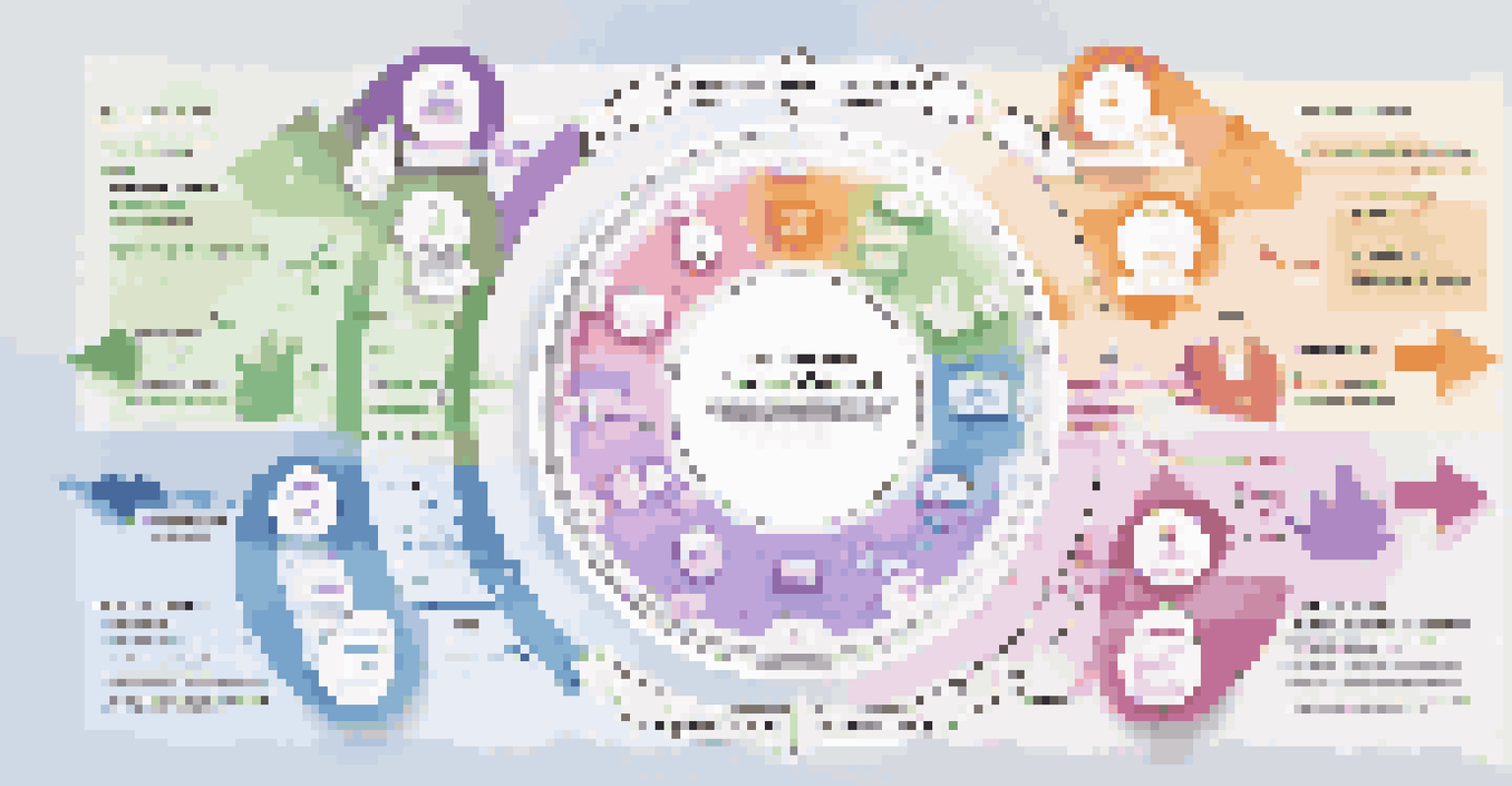The Importance of User Feedback in Collaboration Tools

Understanding User Feedback in Collaboration Tools
User feedback is vital in shaping collaboration tools to meet actual needs. It helps developers understand how users interact with the software, highlighting areas for improvement. By gathering insights from real-world usage, teams can prioritize features that truly enhance productivity.
Feedback is the breakfast of champions.
Imagine a chef perfecting a recipe based on diner reviews; similarly, developers refine tools based on user experiences. This feedback loop fosters a culture of continuous improvement, ensuring that the tools evolve alongside user expectations. Ultimately, it allows for a more intuitive and effective user experience.
In a world where collaboration tools are abundant, distinguishing a product often relies on how well it listens to its users. When tools are built with user input in mind, they not only solve existing problems but also anticipate future needs, making them indispensable in any workplace.
The Benefits of Active User Involvement
Engaging users in the development process offers numerous benefits, the most prominent being increased satisfaction. When users feel their opinions are valued, they are more likely to adopt and advocate for the tool. This sense of ownership can lead to better retention rates, as users stick with tools that reflect their input.

Moreover, active involvement can streamline communication between users and developers. Regular feedback sessions or surveys can bridge any gaps, ensuring that everyone is on the same page. This collaboration not only fosters innovation but also strengthens community ties among users.
User Feedback Shapes Tool Development
Gathering user insights is crucial for developers to refine collaboration tools and enhance user experience.
Think of user feedback as a compass guiding the development team through uncharted waters. It helps navigate challenges, ensuring that the final product aligns with user needs and preferences. Consequently, this iterative process can lead to tools that are not just functional but genuinely enjoyable to use.
How Feedback Drives Feature Development
Feature development without user feedback can be like shooting in the dark; you may hit something, but often, you miss the mark. User insights provide clarity on which features are necessary and which might be superfluous. This ensures that development resources are allocated efficiently toward high-impact improvements.
The single biggest problem in communication is the illusion that it has taken place.
For example, if users frequently request integration with a specific third-party app, that feedback can prioritize development efforts. By aligning features with actual user needs, teams can create tools that feel tailor-made rather than one-size-fits-all. This targeted approach not only enhances functionality but also boosts user satisfaction.
Additionally, user feedback can illuminate pain points that developers may not have considered. This insight can lead to the creation of features that address specific challenges, making collaboration smoother and more efficient. Ultimately, it’s about creating a product that not only serves its purpose but also delights its users.
Building a Feedback-Friendly Culture
Creating a culture that embraces feedback is essential for the success of collaboration tools. This culture encourages open communication where users feel comfortable sharing their thoughts. When feedback is welcomed, it fosters an environment of trust, allowing for honest dialogue about what works and what doesn’t.
To build this culture, organizations can implement regular feedback sessions and encourage team members to voice their opinions. Offering incentives for constructive feedback can also motivate users to engage. This not only boosts participation but also enriches the feedback pool with diverse perspectives.
Active User Involvement Boosts Satisfaction
Engaging users in the development process fosters a sense of ownership, leading to higher adoption and retention rates.
Think of it as planting a garden; the more you nurture and cultivate feedback, the more fruitful the results. By consistently engaging with users, organizations can adapt and grow their tools to meet evolving needs. This ongoing relationship transforms tools from mere software into essential partners in productivity.
Measuring the Impact of User Feedback
Understanding the impact of user feedback is crucial for demonstrating its value. Utilizing analytics can help track changes in user behavior following updates made based on feedback. This data provides tangible proof that user input directly influences tool effectiveness and user satisfaction.
For instance, if a collaboration tool implements a new feature after receiving user suggestions, measuring its usage can reveal its success. Increased engagement with that feature can validate the decision, showcasing the importance of listening to users. Conversely, if a feature falls flat, it offers another learning opportunity.
Ultimately, measuring feedback impact fosters accountability and encourages continuous improvement. When teams can see the real-world effects of user suggestions, it reinforces the importance of maintaining open lines of communication. This cycle of feedback and measurement ensures that tools remain relevant and user-friendly.
Challenges in Collecting User Feedback
While user feedback is invaluable, collecting it comes with its own set of challenges. One common issue is overcoming user reluctance to share their thoughts, often due to time constraints or a lack of awareness of the feedback process. Addressing these barriers is essential for fostering a robust feedback culture.
Another challenge is ensuring that the feedback collected is representative of the user base. If a small, vocal group dominates feedback channels, it may skew the development priorities. It's important to engage diverse user segments to gather a well-rounded perspective that truly reflects the needs of all users.
Challenges in Collecting Feedback
Organizations must address user reluctance and ensure diverse input to create a robust feedback culture.
Finally, analyzing the feedback can be overwhelming, especially if it’s unstructured. Implementing organized methods for categorizing and prioritizing feedback can streamline this process. By addressing these challenges head-on, organizations can create a more effective framework for harnessing user insights.
The Future of Collaboration Tools and User Feedback
As technology continues to evolve, the role of user feedback in shaping collaboration tools will only grow. Future tools may leverage advanced technologies like artificial intelligence to analyze feedback more efficiently and offer personalized experiences. This shift could lead to tools that adapt in real-time to user preferences and behaviors.
Moreover, as remote work becomes more mainstream, understanding diverse user needs will be critical. Feedback will help developers create tools that cater to varying work styles and environments, ensuring that everyone can collaborate effectively. This adaptability will be essential for maintaining productivity in increasingly dynamic work settings.

In conclusion, the future of collaboration tools hinges on an ongoing commitment to user feedback. By prioritizing user insights, developers can create tools that not only meet current demands but also anticipate future trends. This proactive approach will ultimately lead to more effective and enjoyable collaboration experiences.